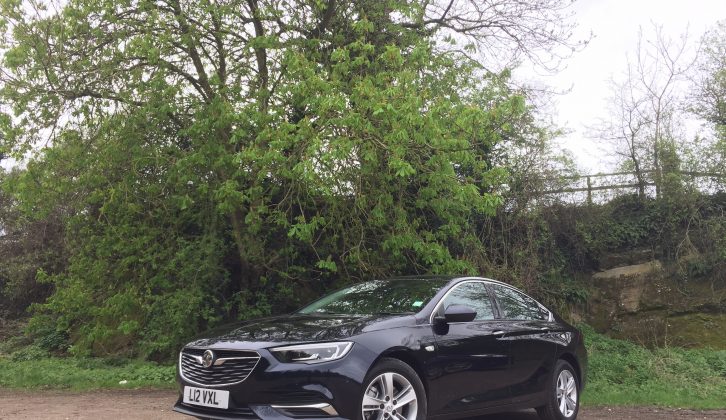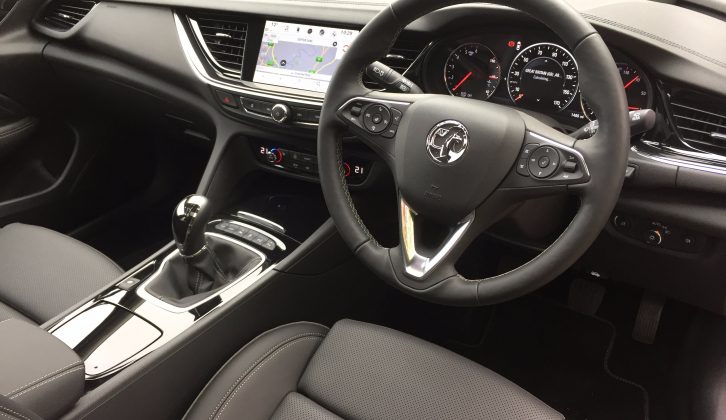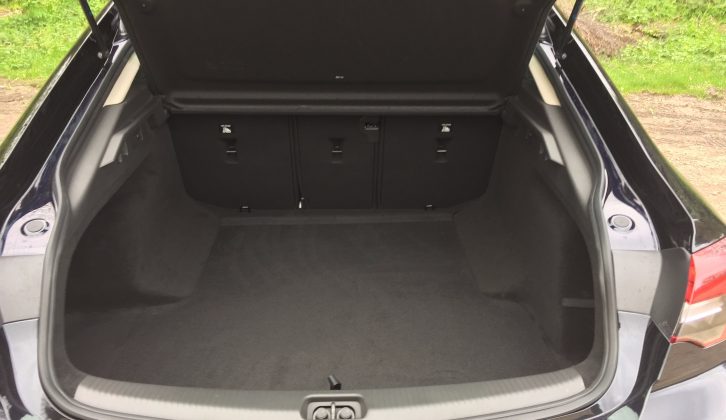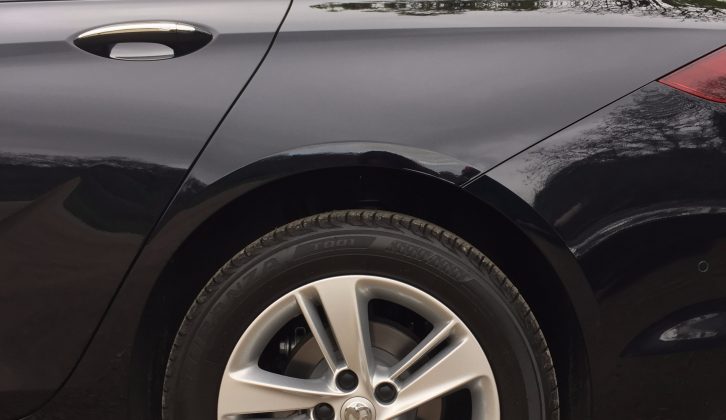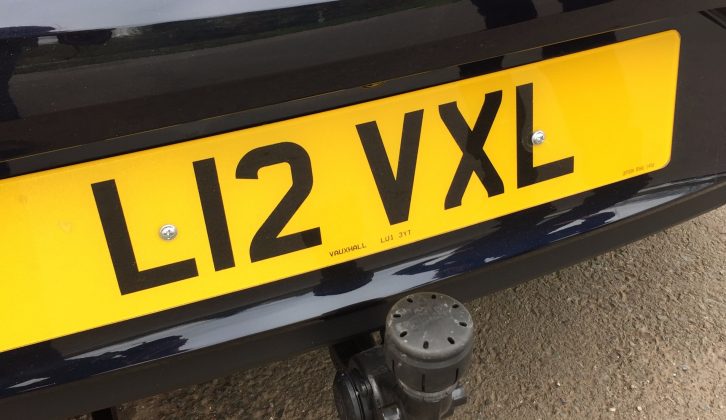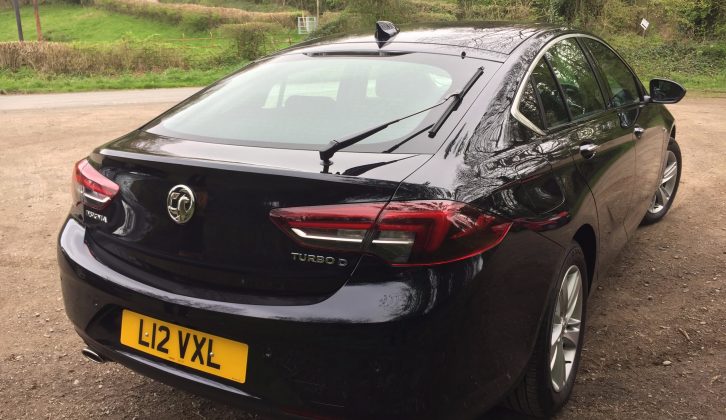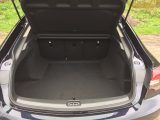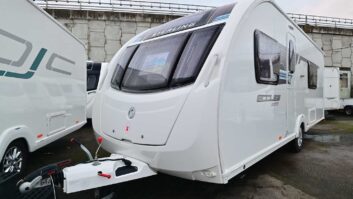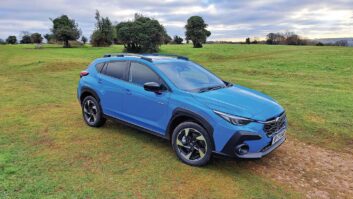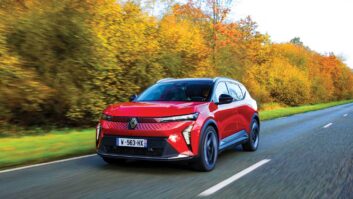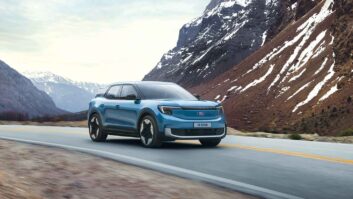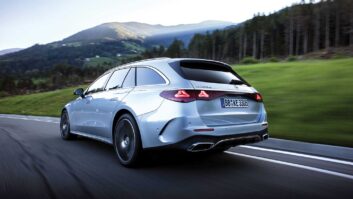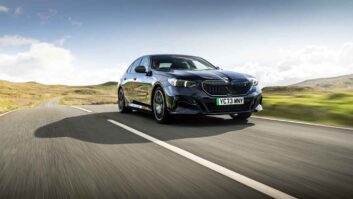The Insignia Grand Sport is here and, to our eyes at least, it is one of the best-looking new Vauxhalls of recent times. So, what’s new?
Well, everything. Starting with its name.
‘Grand Sport’ tells you that this is the five-door hatchback, rather than the Sports Tourer or Country Tourer estate variants which will follow hot on its heels.
The latest Vauxhall Insignia is also larger than its predecessor. So much so that its dimensions take it from the D segment of its Vectra roots, into the E segment, which the now-discontinued Omega inhabited.
It is now 55mm longer and 7mm wider. But the figures that caravanners might be pleased to hear are that its wheelbase has been increased by 92mm, plus it has an 11mm wider track front and rear, which should boost stability when towing.
Crunching the numbers
Other key figures relate to internal space. An increase in external dimensions has, unsurprisingly, created more room inside.
Rear-seat passengers enjoy 25mm more legroom and 8mm more headroom – the latter perhaps a little unexpected given the Insignia Grand Sport’s coupé-esque roofline.
However, this is at the expense of boot space, which is less than its predecessor. With the rear seats up it’s now 490 litres, 10 fewer than before, while it has lost 20 litres with the seats folded away, now giving customers a 1450-litre space.
And, as is the way as manufacturers seek to improve efficiency, the new Grand Sport is up to 175kg lighter than its predecessor – the Sports Tourer will be up to 200kg lighter.
Kerbweights for the Grand Sport range from 1440kg to 1649kg, giving still-useful 85% match figures of 1224kg to 1401kg.
Prices start at £17,115 (the Sports Tourer will cost from £18,615), £1500 less than the outgoing line-up.
What’s under the bonnet?
Starting with the petrol options, there’s a turbocharged, 1490cc engine available in two states of tune (140PS/184lb ft torque and 165PS/184lb ft torque) with a six-speed manual gearbox.
Top of the petrol range is a four-wheel-drive, 2.0-litre turbocharged unit with 260PS/295lb ft torque. This is mated to Vauxhall’s new eight-speed automatic transmission.
When it comes to diesels, there are two 1.6s and a 2.0-litre variant. A range-topping twin-turbo, 2.0-litre option, with four-wheel drive and the eight-speed auto, will join the line-up in June.
You get either 110PS/221lb ft torque or 136PS/236lb ft torque if you have a 1.6, both with a six-speed manual, although the higher-rated engine can be had with a six-speed auto.
With the 2.0-litre turbodiesel you get 170PS plus 295lb ft torque, with either the six-speed manual or the eight-speed auto.
Spec-wise, there are seven options: Design, Design Nav, SRi, SRi Nav, SRi VX-Line Nav, Tech Line Nav and Elite Nav.
Get inside
Our first impressions of this being a great-looking car continued the moment we opened the door. In fact, it is hard to believe this is from a mainstream manufacturer and not a prestige brand.
You sit low, feeling the interior wrap around you. The dashboard’s elegant sweep across the car is adorned with an understated, pin-striped pattern. And at night this and the door cards are bejewelled with a single curved strip of ambient lighting.
And there are thoughtful touches inside, such as the mini-shelf-like lip in front of the touchscreen, designed so you can rest your hand on it when using the screen. It sounds silly, but it’s rather handy.
Up front, cabin space is comfortable. And those figures don’t lie – the rear is good-sized, even if taller people might need to stoop to get in. The swooping window has been well-judged, too, so it doesn’t feel claustrophobic in the back.
Press the Vauxhall badge to open the boot and you’ve a useful space (490 litres, as aforementioned) with a wide opening, although there’s quite a lip to lift items over. And the split/folding rear seats are a doddle to operate.
On the road
The car that we spent most time driving was a Tech Line Nav-trimmed Vauxhall Insignia Grand Sport, powered by a 2.0-litre 170PS turbodiesel working with a six-speed manual gearbox. In fact, the very car that was going from this event to our Tow Car Awards test the same week.
Currently the most powerful diesel on offer, performance is undramatic, yet acceleration is strong. There’s not an embarrassment of power, but few will ever feel short-changed.
Once warm, the engine noise fades away. Although with the engine running, it’s not that quiet outside the car, leaving us to wonder how noisy it would be in the cabin without the optional noise-reducing laminated side windows (£220) fitted to our test car.
The smooth-shifting six-speed manual transmission’s gear lever feels pleasingly premium, and the ride on 17-inch alloys was good, although there is some road and wind noise heard in the cabin.
There are three drive modes: normal, sport and tour. We found ‘tour’ far too wafty, the car floating around and the otherwise very clean, direct steering rather woolly.
‘Sport’ tighten things up, the car feeling much more tied down and the steering noticeably more weighty. When you’re out for a bit of fun it’s a definite advantage, but could prove tiring over time.
‘Normal’ is a super compromise. In fact, it’s really no compromise at all, it’s that good.
Stand-out options
A few options of note on this test car included the head-up display (£290). Easy-to-read, it is a great asset and means you don’t need to take your eyes off the road.
The other was the towing pack, at a slightly eye-watering £685. For that you get a retractable tow bar that, once attached and pushed out of view, can be revealed at the tug of a lever, accompanied by a piercing beep.
In addition, you get a trailer stability programme integrated into the car’s ESP system when you tick that option box.
Petrol performers
We also drove two petrol-engined models, from either ends of the spectrum.
First was the entry-level, 140PS 1.5. And if you have a lighter caravan, given its 1456kg kerbweight, it could make a very easy companion on long drives.
The sprightly engine is quiet and happy to rev, the six-speed manual well-matched to it, so you can eke out what performance there is.
And, as with its stablemates, the nicely balanced steering will also aid comfort on long drives on your caravan holidays.
The 260PS, 2.0-litre petrol, with its 295lb ft thwack of torque, is a completely different proposition. It is fabulously and effortlessly powerful, although an official combined fuel consumption figure of 32.8mpg could hurt running costs.
But, for some, this model’s super-smooth, eight-speed automatic gearbox and the fact that its four-wheel drive helped it feel so well tied down – and would help when escaping muddy pitches – might prove hard to resist.
With the new Insignia Grand Sport, Vauxhall has stepped things up in terms of style, finish and the materials used inside. All variants felt sure-footed, which bodes well when considering tow car potential, and were very comfortable places to spend time.
So, after this preview, we’re excited to learn how the Insignia performs during this year’s Tow Car Awards test week. Thankfully, we’ve not long to wait!
It is hard to believe this is from a mainstream manufacturer and not a prestige brand
